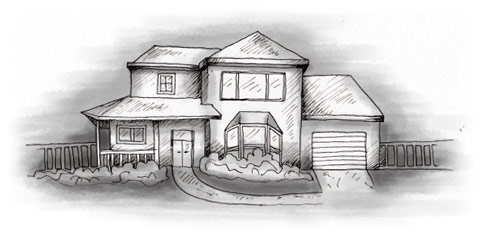Central heating systems in Spain may be powered by oil, gas, electricity, solid fuel (usually wood) or even solar power. Oil-fired central heating isn’t common due to the high cost of heating oil and the problems associated with storage and deliveries.
In rural areas, many houses have open, wood-burning fireplaces and stoves, which may be combined with a central heating system. Whatever form of heating you use, it’s important to have good insulation, without which up to 60 per cent of the heat generated is lost through the walls and roof. Many homes, particularly older and cheaper properties, don’t have good insulation and even with new homes, builders don’t always adhere to current regulations.
In cities, apartment blocks may have a communal central heating system providing heating for all apartments, the cost of which is divided among the tenants. If you’re a non-resident or absent for long periods, you should choose an apartment with a separate heating system, otherwise you will be contributing towards your neighbours’ bills.
Electric heating in Spain
Electric heating isn’t common, as it’s too expensive and requires good insulation and a permanent system of ventilation. It’s advisable to avoid totally electric apartments in regions with a cold winter, such as Madrid, as the bills can be astronomical. More economical options include a system of night-storage heaters operating on night tariff and electric radiators ( radiador eléctrico) incorporating the latest energy-saving advances.
These radiators, available from DIY and department stores, are filled with a heat-retaining gell or liquid, which means that the radiator stays warm for longer than a conventional radiator. They’re easy to install (they require two wall brackets and a socket) and are similar in appearance and size to conventional radiators. However, heating a property by electricity is never cheap and you should expect to pay between €50 and €125 a month during the coldest months, i.e. November to February.
An air-conditioning ( aire acondicionado) system with a heat pump provides cooling in summer and economical heating in winter. Note that if you have electric central heating or air-conditioning, you must probably upgrade your power supply.
Gas
Stand-alone gas heaters using standard gas bottles ( bombonas) cost from €60 to €150 and are an economical way of providing heating in areas that experience mild winters (such as the Costa del Sol). Gas heaters must be used only in rooms with adequate ventilation, inspected and approved by Repsol Butano, and it can be dangerous to have too large a difference between indoor and outdoor temperatures.
Gas poisoning due to faulty ventilation ducts for gas heaters (e.g. in bathrooms) isn’t uncommon in Spain. It’s possible to install a central heating system operating from standard gas bottles, which costs around €2,000 for a small home. The Spanish oil providers Cepsa and Repsol offer good deals on gas central heating, including low-cost financing of the installation. Primus of Sweden is the leading foreign manufacturer. Mains gas central heating is popular in cities and is the cheapest to run.
Solar Energy
The use of solar energy to provide hot water and heating is still rare in Spain, where the amount of energy provided by the sun each year per square metre is equivalent to eleven gas bottles. New homes are usually fitted with a solar power system and the government has recently introduced legislation that will require all new homes built from 2007 to have solar powered water heating and (if applicable) central heating.
A solar power system can be used to supply all your energy needs, although it’s usually combined with an electric or gas heating system, as it cannot usually be relied upon for year round heating and hot water. If you own a home on Spain’s Mediterranean coast (or on the islands), solar energy is a viable option and the authorities (regional and national governments) offer grants and interest-free finance to encourage homeowners to install solar-energy systems.
The main drawback is the high cost of installation, which varies considerably depending on the region and how much energy you require. A 400-litre hot-water system costs around €3,000 (grants and subsidies are available from regional governments and the EU) and must be installed by an expert. The advantages are no running costs; silent, maintenance-free operation; and no (or very small) electricity bills. A system should last 30 years (it’s usually guaranteed for ten years) and can be upgraded to provide additional power in the future. It can also be used to heat a swimming pool. A solar power system could also provide electricity in a remote rural home, where the cost of extending mains electricity is prohibitive.
Air-conditioning
In some regions, summer temperatures can reach over 40°C (104°F) and although properties are built to withstand the heat, you may wish to install air-conditioning. Note, however, that there can be negative effects if you suffer from asthma or respiratory problems and it’s easy to catch an infection when your body undergoes extreme changes in temperature. Air-conditioning units cost from around €600 (plus installation) for a 2,000 BTU ( frigorías) unit, which is sufficient to cool an average size room. Some air-conditioners are noisy, so check the noise level before buying one.
An air-conditioning system with a heat pump provides cooling in summer and economical heating in winter – a system with an outside compressor providing radiant heating and cooling costs around €1,200 per room. Many people fit ceiling fans for extra cooling in the summer (costing from around €65), which are standard fixtures in some new homes.
Humidifiers & De-humidifiers
Central heating and air-conditioning dry the air considerably and may cause your family to develop coughs and other ailments. Those who find dry air unpleasant can install humidifiers ( humidificador) which add moisture to the air. These range from simple water containers hung from radiators to electrical or battery-operated devices. Humidifiers that don’t generate steam should be disinfected occasionally with a special liquid available from chemists.
On the other hand, damp and high humidity are common problems in many holiday homes and it’s worthwhile installing de-humidifiers ( deshumidificador), especially in the bedrooms, to prevent clothes and linen going mouldy. De-humidifiers are very useful in homes near the coast where humidity levels in winter are very high.
This article is an extract from Buying a home in Spain. Click here to get a copy now.


